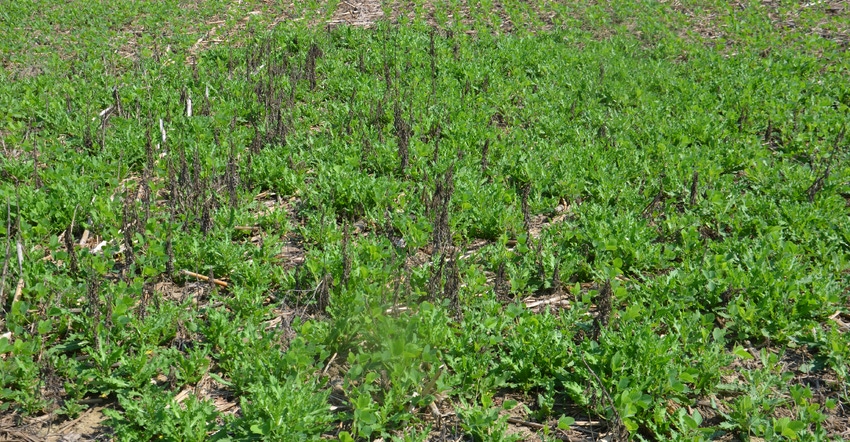
Knowing the enemy is always good advice. If you’re battling stubborn patches of Canada thistles, the first thing to know is that they have underground root systems several feet deep, which can spawn new shoots even if you mow or burn off top growth. Since they are a perennial plant, they can regrow from roots year after year, unless you can destroy the root system.
“We’ve had problems going after them in soybeans during the season, because we just didn’t have herbicides which we could use in-crop which were very effective,” says Bill Johnson, Purdue University Extension weed control specialist. “When Xtend soybeans came along, that meant we could spray dicamba over them in Xtend dicamba-tolerant soybeans, and that was a huge help. Before, we had to rely on herbicides like Classic, and the best we could hope for was to burn them back so we could make it through the year.”
Even with dicamba-tolerant soybeans, you likely won’t wipe out a thick patch of Canada thistles with one application of dicamba at the rate you can use in soybeans, Johnson says. But you can expect better control than if you are relegated to relying on Classic-type chemistry.
If you grow Enlist E3 soybeans, you can’t apply dicamba — but you can apply 2,4-D choline, which is effective against thistles. If you have Liberty-tolerant soybeans, Johnson suggests a tankmix of Liberty and Classic if you are trying to control patches of thistles.
Remember that Liberty is a contact herbicide, he says. That’s why people who rely on Liberty apply higher spray volumes, usually around 20 gallons per acre, to get better coverage of the weeds’ leaf surfaces. “You also want to wait until the dew is off in the morning before you spray,” he says. “Otherwise, some of the glufosinate herbicide will drip off of the leaf in water droplets, instead of hanging around to enter the leaf and attack the plant.”
Timing matters
There are two times of year when thistles are most susceptible to chemical control, Johnson says. The first time is when they’re entering the reproductive or bud stage. The second time is usually in the fall, when thistles begin to regrow from roots after the typical late-summer drought. Ideally, if you can hit them at about 6 inches tall, while they are still actively growing, you increase your odds for better control.
Thistles in the field pictured above are growing back in a path that was burned down before planting, Johnson observes. Note the skeletons of old thistle plants interspersed amongst the thriving young green thistle population.
“If this was your field, you would want to hit that Canada thistle patch as soon as possible, before they get larger and go into the late reproductive stage, when seeds are mature,” Johnson says. “Thistles aren’t very susceptible to chemical control once they reach advanced reproductive stages.”
What you could use depends on which traits the soybeans possess, as noted earlier. “Check the labels carefully, and don’t skimp on rates,” Johnson emphasizes. “You also want to pay attention to environmental conditions. Thistles are most susceptible when they’re actively growing.”
About the Author(s)
You May Also Like




